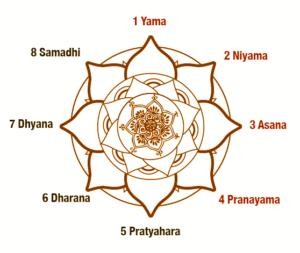
8 Walking – a simple alternative daily walking technique
Author Bio: Senthil Kumar is a Psychology Counsellor with 8+ yrs of experience and specialized in Individual/ Relationship / Couple/ Pre-marital Counselling & assessments, Work

Aanmeekam (Spirituality) is path to pious living. Bharat provides vast opportunities to experiment, experience and encompass pious living. Sacred mix of Devotion, Philosophy, and learnings from Upanishads and a space for believers and non-believers.
There are six Darshan (i.e) philosophy in Hinduism which are Samkhya, Yoga, Nyaya, Vaisheshika, Mimamsa and Vedanta.Among these six schools, Vedanta is very popular and has it’s root in Veda/Upanishad (Shruti).
Vedanta is a spiritual philosophy which think-over following three elements and relationship between them:
The founder or chief exponent of these schools (i.e philosophies) are as follows:
Advaita – there is only one absolute and ultimate truth – Brahman.Advaita emphasise/insist on self-realization/jnana
Vishishtadvaita – According to Vishishtadvaita, Brahman (Paramatma/Sriman Narayana) is the supreme and inner soul of universe as well as jivatma. Universe and Jivatma have body-soul (Sharira-Shariri) relationship with Brahman. Jivatma and Universe is the body and essential part of Brahman.
Shuddhadvaita – According to Suddhadvaita, Brahman without maya is the cause for Universe. Maya is not unreal but it is shakti (energy) of Brahman. Apparent manifestation or dvaita prapanch is not due to maya or unreal but it is the wish of Brahman/Krishna instead.
Dvaita – According to Dvaita, Universe and Jiva are separate from Brahman/Vishnu. All these three elements (Jiva, Universe and Brahman) are real and different from each other.
Dvaitadvaita – According to Dvaitadvaita, Brahman is the highest reality and nothing is superior to Brahman.Brahman is material and efficient cause (creator-maintainer-destroyer) of universe. Jiva and Brahman can be considered different and non-different.
Achintya Bhedabheda– Achintya Bhedabheda refers to inconceivable oneness and difference. (The nature of relationship between Jiva and Brahman is inconceivable to human mind). According to Achintya Bhedabheda, Brahman is simultaneously one with and different from his creation.
Aanmeekam also further subjects like Archana, Stotras, Aaraathanai etc these aspects are also covered under TEMPLE WORSHIP.
It is said that there are 64 Jyotirlingas but 12 of these are of utmost importance. Here let’s check out the important jyotirlingas temple in the country.The Nayanars (or Nayanmars; Tamil. ‘hounds of Siva’, and later ‘teachers of Siva’) were a group of 63 saints living in Tamil Nadu during the 3rd to 8th centuries CE who were devoted to the Hindu god Shiva. The names of the Nayanars were first compiled by Sundara
A Divya Desam or Vaishnava Divya Desam is one of the 108 Vishnu temples that are mentioned in the works of the Alvars (saints). ”Divya” means “divine” and “Desam” indicates “place of abode” (temple). Of the 108 temples, 105 are in India, one is in Nepal, and the last two are believed to be outside the Earthly realms. The Divya Desams are revered by the 12 Alvars in the Divya Prabandha, a collection of 4,000 Tamil verses. Divya Desams follow Thenkalai or Vadakalai modes of worship
The Shakti Pitha are significant shrines and pilgrimage destinations in Shaktism, the goddess-focused Hindu tradition. There are 51 Shakti peethas by various accounts, of which 18 are named as Maha (major) in medieval Hindu texts
Apart from temple worship we follow another method of worship and that is the prayer we conduct daily in our homes. This is dealt with separately as this is the routine of an individual which he is supposed to practice everyday
Spiritually scientific answers to various questions pertaining to the different acts one performs while visiting Hindu Temples, such as why enter a Hindu temple only after washing the feet, why have darshan of the Deity by standing beside the image of the tortoise present in front of the Idol (instead of doing this while standing in between or sitting down), what prayer to make while having darshan of the Deity, why, how and how many times to perform pradakshiṇā (Circumambulation) around the Deity in Hindu Temples etc. are given in this series
“எது நம்மை இயக்குகிறதோ அது எதுவென தேடி அறிவதே ஆன்மீகம், இது ஒரு வகையான அறிவு சார்ந்த தேடல் நாம் எங்கிருந்து வந்தோம். எதை நோக்கி நமது பயணம் போகிறது அதற்கான முடிவுதான் என்ன? இறைவனிலிருந்து பிரிந்த ஜீவாத்மா மீண்டும் இறையோடு ஐக்கியமாக ஆன்மா தேடும் பாதைதான் ஆன்மீகம்“

Author Bio: Senthil Kumar is a Psychology Counsellor with 8+ yrs of experience and specialized in Individual/ Relationship / Couple/ Pre-marital Counselling & assessments, Work

Author Bio: Senthil Kumar is a Professional Psychology counselor along with IT, Ayurveda and Siddha Varmam background . He is a certified and experienced Ayurveda

Yoga is to harmonize the body and mind with nature and lifestyle in tune with nature.Yoga in Sanskrit for “yoking” or “union”, is a group
Join our subscribers list to get the latest articles, updates delivered directly in your inbox.
We hate spam as much as you do






